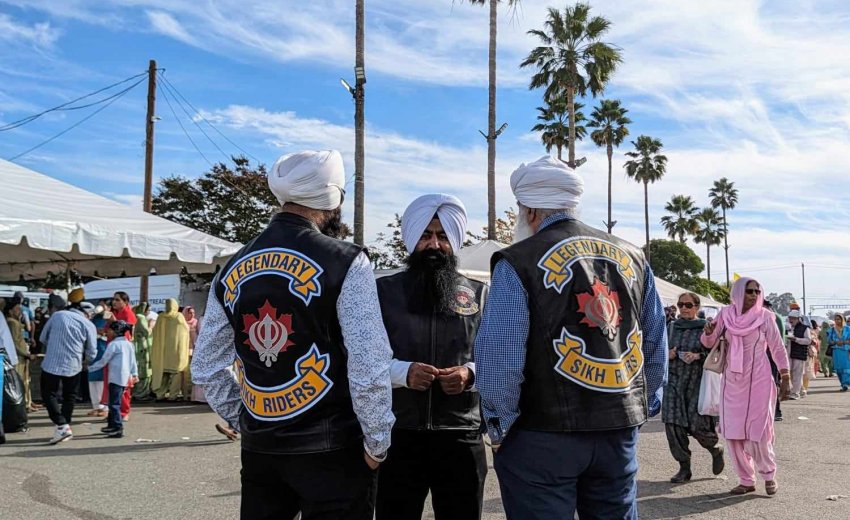On October 8, 2023, Governor Gavin Newsom vetoed an act to amend Section 27802 of the Vehicle Code which would have exempted Sikhs who wear turbans as an expression of their religious belief and practice from wearing helmets while riding a motorcycle, as long as their headwear had been certified by the California Highway Patrol. The governor’s reasoning included the written statement,
“While I am sensitive to the protection of religious freedoms, I cannot support legislation that would have the unintended public safety consequences associated with this proposal.”
SB 847 in its final version would have authorized the “Department of the California Highway Patrol to adopt a regulation certifying a helmet that substantially complies with but does not meet requirements imposed by federal standards if the helmet is designed for purposes of compliance with a driver or passenger’s religious beliefs”.
What is involved with Compliance and Certification?
Compliance and Certification is probably the most misunderstood aspect of Bill SB 847. There had been talk and proposals of certifying helmets that would fit over a patka, or a dastar. However, Sikhs have, in actuality, been working towards the possibility of having a 7-meter turban certified for compliance, which could possibly include an easily identifiable stamp of compliance on the fabric, and, or visible label of certification sewn on to the fabric. Possibly a stamp of verification and certification of compliance on a motorcycle license could be also be considered by the DMV.
Support and Opposition of Bill SB 847
Supporters of the bill included endorsements by several motorcycle clubs including:
- Legendary Sikh Riders
- Sikh Legends of America
- Sikhead Saints Motorcycle Club
- 93% of Senate Floor
Opposers of the bill were primarily safety oriented, with one exception, and included:
- Auto Club of Southern California
- California Coalition for Children's Safety and Health Children's Advocacy Institute
- University of San Diego School of Law County Health Executives Association of California
- Jakara Movement - Opposed any restrictions imposed on religious beliefs regarding the turban
When asked about their opposition to the amended language of the bill passed by the senate, and whether they had plans to pursue another future amendment Naindeep Singh, Executor Director of Jakara Movement replied,
“We did indeed write a letter of opposition after initially writing a letter of support. The final version that went before the Governor removed the exemption for the Sikh turban. We are talking to other groups to pass a "clean bill" that actually exempts Sikhs from the helmet law (like the original language and not the amended final language). As a community we have to know what our red lines are. Are we passing a bill to pass a bill or passing a bill to get an exemption we seek? The original bill had the exemption, which is why we wrote a letter of support. The amended version that went to the Governor had the exemption struck out, which is why we wrote a letter of opposition. We spoke to multiple Sikh lawyers, including the Deputy DA of Sacramento County that asked us to oppose the bill.”
The original language of SB 847 would have exempted “a person who wears a turban or patka as an expression of the person’s religious belief and practice when riding on a motorcycle.” The earlier version had been struck out because the bill would not have passed to the senate had the language not been revised.
Author of SB 847 and What Comes Next
Mandeep Singh Attorney at Law worked with Senator Brian Dahle to author California Bill SB847 (2023). When asked, “What’s next?” Mandeep Singh replied,
“Sikhs have been faced with obstacles for centuries, there is no chance to give up! We have worked for this many years; we do not get derailed from our aim.”
Mandeep Singh also stressed that education is a must for both Sikhs and the general public. Educating Sikhs is vital to their understanding what is involved in amending existing laws. Sikhs must all work together in complete unity. Whatever issues there may be, they need to be addressed amongst Sikhs themselves, as one body, in order to successfully achieve the desired objective. Going against each other destroys everything.
When asked about safety issues regarding the turban, Mandeep Singh replied,
“There is no question of wearing only a patka, (a single layer of square cloth tied over the joora, or top knot to secure hair). The bill is moving forward, we are going for at least a [minimum] 7-meter (7 yards - 21 inches) turban, dastar, or domala.”
He went on to say that he continues working with legislators towards this aim.
When Did Wearing a Helmet Become Law in California and Why are Sikhs Concerned?
In 1966 legislation authorized the Federal government to with holds highway funding from states which did not enact mandatory helmet laws. Three States including California refused to comply. With the enactment of AB 7 (chapter 32), California came into full compliance with Federal law on January 1, 1992. In 1995 the Federal Government repealed the penalty for states without helmet laws, allowing individual states to set their own requirements. Ever since, Sikhs have been working towards acquiring exemption for riders and passengers who wear the Sikh mandated turban or dastar. Failed attempts include:
- AB 2700 (2002)
- SB 685 (2003)
- SB 969 (2006)
- AB 2427 (2006)
- AB 1205 (2009)
- AB 695 (2011)
Long hair covered by a turban is required wear for a Sikh as per Sikh Rehit Maryada (SRM) the Sikh Code of Conduct and Conventions, Section 4, Chapter X, Article XVI, Page 24, which states:
- “(i) A Sikh should, in no way harbor any antipathy to the hair of the head with which his child is born. He should not tamper with the hair with which the child is born…A Sikh should keep the hair of his sons and daughter intact.”
- (q) “A Sikh should observe the Sikh rules of conduct and conventions from his birth right up to the end of his life.”
- (t) “For a Sikh, there is no restriction or requirement as to dress except that he must wear Kachhera (undergarment) and turban.”
Sikhs feel so strongly about wearing a turban that many would be willing to give up their life rather than disobey the 52 Hukams or orders laid out by 10th Guru Gobind Singh on which SRM are based.
- Hukam (35) “Dastaar bina nahi rehnaa” – Wear a turban at all times.
Dastar (turban) styles most associated with Sikh dress standards include:
- Pagri – most common style of 6 or more meters
- Double Patti – double wide, up to 90 inches in width and 6 yards, or meters, or more in length.
- Domala – two turbans tied one over the other, up to 10 yards of meters in length.
Ironically, none of these most common styles can be worn beneath a standard DOT- certified helmet. Given that these styles of turban require up to 20 minutes to tie, as well as a mirror, it also makes commuting to work, or social occasion, on a motorcycle impractical because they cannot be worn with a helmet.
When asked what length of turban he wore when riding with a helmet, Manpreet Singh, a member of Legendary Sikh Riders who rides for the joy of riding explained,
“I usually wear a helmet with a 3-to-5-yard dastar. I haven’t worn a helmet in a few months. Since finding out we have support in the senate, I wear an 8-to-10-yard domalla to ride.”
Exemptions and Exceptions
Only three states have no motorcycle laws, Illinois, Iowa and New Hampshire. Canada and India both provide exemptions for Sikhs. Many countries do not require helmets.
Religious exemptions and exceptions have been granted to Sikhs in the USA Military Forces and Police Forces allowing them to wear turbans and to keep their hair and beards intact.
Existing California and Federal Law
It is very important to understand existing California State and Federal laws in order to understand why the governor chose not to sign the helmet exemption Bill SB 847 citing safety issues despite its having passed the senate by a whopping 93% of votes.
California as two types of motorcycle license. M1 allows riders to operate any two-wheel vehicle, motorcycle, motor-driven cycle or motorized scooter or bicycle, or moped. M2 is only applicable to a motorized scooter or bicycle or moped. Existing California state vehicle laws concerning helmets apply to both drivers who are operating a motorcycle and passengers riding on a motorcycle or motorized bicycle. Violators may be fined up to $250.00 and, or, given a year’s probation.
Existing Vehicle Code Section 27802 states:
“(a) The department may adopt reasonable regulations establishing specifications and standards for safety helmets offered for sale, or sold, for use by drivers and passengers of motorcycles and motorized bicycles as it determines are necessary for the safety of those drivers and passengers. The regulations shall include, but are not limited to, the requirements imposed by Federal Motor Vehicle Safety Standard No. 218 (49 C.F.R. Sec. 571.218) and may include compliance with that federal standard by incorporation of its requirements by reference. Each helmet sold or offered for sale for use by drivers and passengers of motorcycles and motorized bicycles shall be conspicuously labeled in accordance with the federal standard which shall constitute the manufacturer’s certification that the helmet conforms to the applicable federal motor vehicle safety standards.”
Existing Vehicle Code Section 27803 states:
“(a) A driver and any passenger shall wear a safety helmet meeting requirements established pursuant to Section 27802 when riding on a motorcycle, motor-driven cycle, or motorized bicycle.
(b) It is unlawful to operate a motorcycle, motor-driven cycle, or motorized bicycle if the driver or any passenger is not wearing a safety helmet as required by subdivision (a).
(c) It is unlawful to ride as a passenger on a motorcycle, motor-driven cycles, or motorized bicycle if the driver or any passenger is not wearing a safety helmet as required by subdivision (a).”
National Highway Traffic Safety Administration (NHSTA) states:
“Department of Traffic (DOT)-compliant helmets sold in the United States must have a label on the back that contains the following wording and information: manufacturer and/or brand, model designation, DOT, FMVSS No. 218, CERTIFIED.”
California Department of Motor Vehicles
The DMV offers the handbook Preparing to Ride for motorcycle riders which includes advice about DOT helmets and other protective clothing including jackets, pants, booths and gloves. Statistically most accidents occur within 5 miles of home and when riding below 30 miles per hour. Protective clothing and headgear reduce fatalities by 50%.
Going Forward
With disappointments behind them, and motivation to continue moving forwards, legislators and manufacturers, both part of the equation, face obstacles, but hope remains that with a strong unified cooperative front presented by Sikhs, it may yet be possible to amend existing laws, which would grant exemptions that would satisfy all Sikhs, along with development of a turban that would pass certification requirements.







